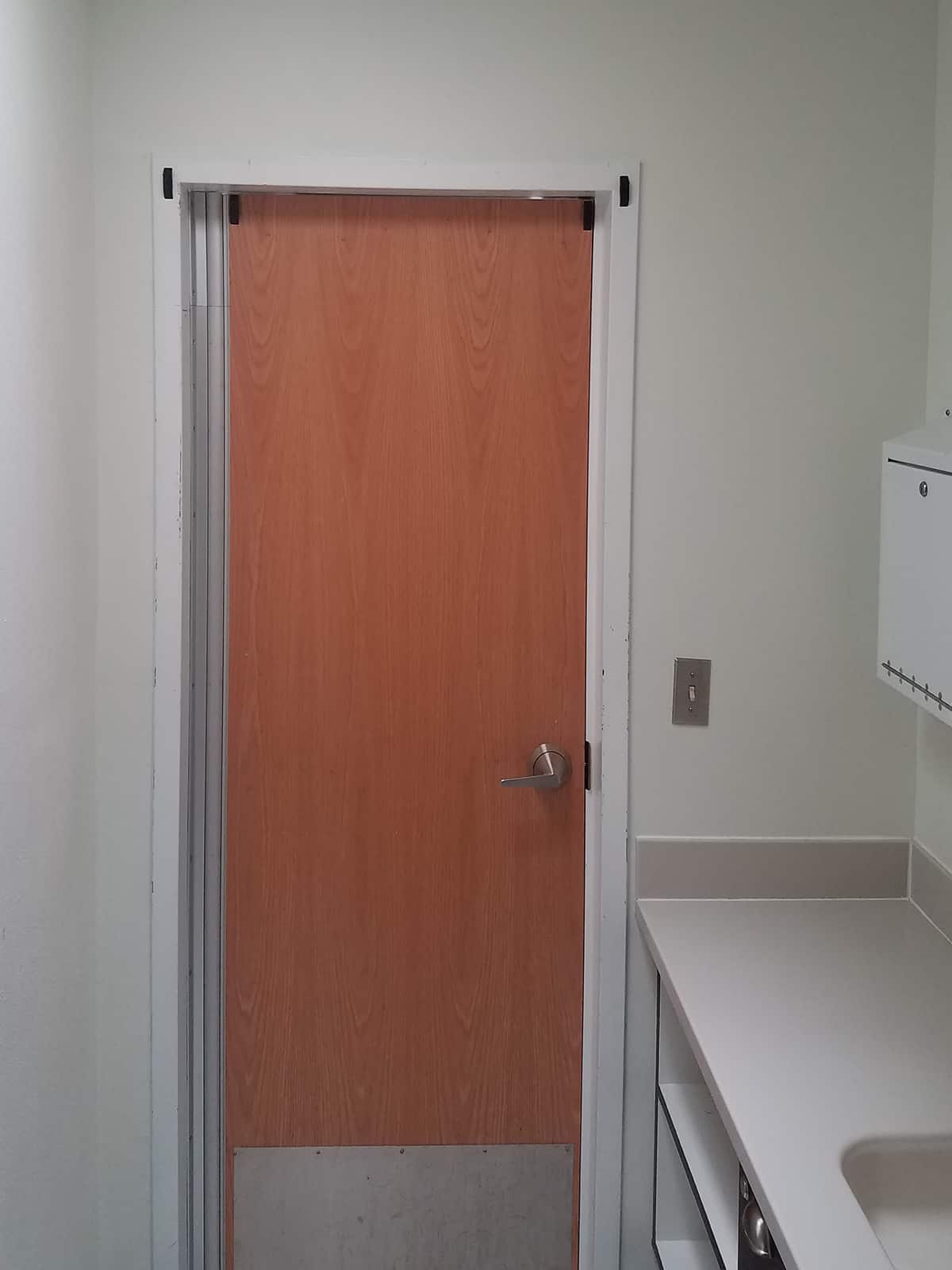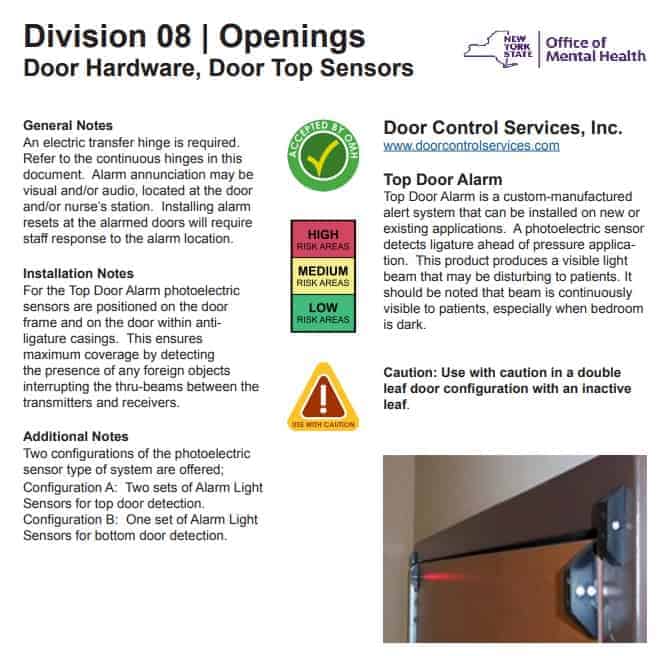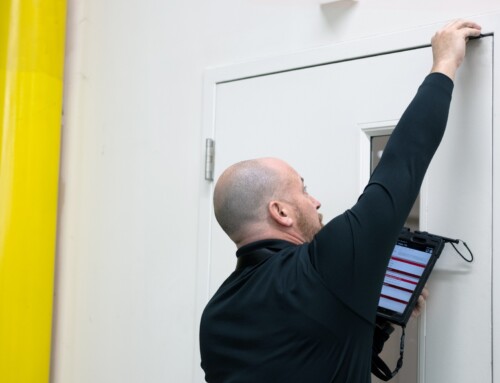Recently, Health Facilities Management featured Top Door Alarm® as an option to reduce ligature danger. Top Door Alarm® is a detection and notification system that identifies potential self-harm when a door is used as a ligature point. In addition, it provides audio and visual notifications to alert staff of a pending act.
Here is an excerpt of Devices and Furnishings to Reduce Ligature Danger.
Devices and Furnishings to Reduce Ligature Danger
Door Control Services Inc., Ben Wheeler, Texas, [is excited to offer the] recently upgraded Top Door Alarm® system [from OEM Door Controls USA] . This presence-detection device alerts hospital staff if a patient uses a foreign object, such as a bed sheet or item of clothing, as a ligature point at the top of a door to commit self-harm. Top Door Alarm provides the same protection at the bottom of a door, deterring patients from performing the “alligator roll” to inflict self-harm, according to Rodney Allison, director of behavioral health products. “The next generation will feature a programmable logic controller (PLC) master control panel with a digital touchscreen located at the nurse station, and options to tie into a hospital’s building automation system.”
About Top Door Alarm®
Patented under US00864620B2, Top Door Alarm® protects more than 3,000 patient room doors across the nation. Top Door Alarm® uses strategically positioned sensors. These sensors detect any presence between the transmitter and receiver before pressure is ever applied to the door.
- Offers proactive presence detection
- Customizable for new or retrofit applications
- For use with conventional or pivot hinges
- Alerts staff with audio-visual notifications
- Results in additional response time
For more information about Top Door Alarm®, click here or contact [email protected].
For the full article, see Devices and Furnishings to Reduce Ligature Danger in the June 2019 issue of Health Facilities Management.
Top Door Alarm is Accepted by the New York State Office of Mental Health
Excerpt from page 35, Patient Safety Standards, Materials and Systems Guidelines, 21st Edition, Revision 2 | March 11, 2019:
Division 08 | Openings
Door Hardware, Door Top Sensors
General Notes
An electronic transfer hinge is required. Refer to the continuous hinges in this document. Alarm annunciation may be visual and/or audio, located at the door and/or nurse’s station. Installing alarm resets at the alarmed doors will require staff response to the alarm location.
Installation Notes
For the Top Door Alarm, photoelectric sensors are position on the door frame and on the door within anti-ligature casings. This ensures maximum coverage by detecting the presence of any foreign objects interrupting the thru-beams between the transmitters and receivers.
Additional Notes
Two configurations of the photoelectric sensor type of system are offered.
Configuration A: Two sets of Alarm Light Sensors for top door detection.
Configuration B: One set of Alarm Light Sensors for bottom door detection.
Door Control Services
Top Door Alarm
Top Door Alarm is a custom-manufactured alert system that can be installed on new or existing applications. A photoelectric sensor detects ligature ahead of pressure application. This product produces a visible light beam that may be disturbing to patients. It should be noted that beam is continuously visible to patients, especially when bedroom is dark.
Caution: Use caution in a double leaf door configuration with an inactive leaf.
Accepted by OMH – Items with this symbol constitute a best practice for all existing facilities and a minimum standard for new construction and renovation projects at NYS-OHM’s state-operated inpatient hospitals. Unless alternatives are identified in the notes section of the page, such items are also minimum standards for Article 31 and Article 28 hospitals. (page 10)
Risk Assessment – Typical high risk areas. Areas with solitary and/or unsupervised patient use. (page 9)
See Patient Safety Standards, Materials and Systems Guidelines, 21st Edition, Revision 2 | March 11, 2019, published by the New York State Office of Mental Health.
Download a PDF of the New York State Office of Mental Health: Patient Safety Standards here.





